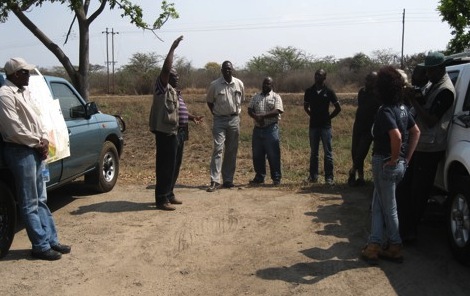Field Trip to the Midlands Greenstone Belt
A Report on the GSZ field trip to the Midlands Greenstone Belt - Led by Dr Mark Tsomondo, 24th September 2011
A group of 10 geologists from Harare and Bulawayo made it to the rendezvous point at the Golden Mile Hotel in Kwekwe by 0930 hrs on the appointed day: These were:
- Mark Tsomondo Field Guide (Harare)
- H. Bouammar Society Chairperson (Harare)
- H. Gumbo (Harare)
- F. Mugumbate (Harare)
- B. Mupaya (Harare)
- Ali Ait Kaci (Harare)
- R. Chirwa (Bulawayo)
- J. Dube (Bulawayo)
- Bishi (Bulawayo)
- D. Chatora (Harare)
Mark Tsomondo has been carrying out research in the Midlands Greenstone Belt (MGB) for more than 10 years. Following a briefing on the theme of the field trip the group proceeded to the Hunters Road Project to start the day examining an outcrop showing the base of the Upper Bulawayan in pit 1. Here we were able to see a sequence of a silicic tuff litho-facies deposited on older Sebakwe-type granitic terrain. There is a gradual upward increase in the number of cherty argillite bands. The sequence is capped by what Mark refers to as the Manjeri-type BIF, with no unconformity observed.
We were also able to examine the Reliance-linked komatiitic sill, which is associated with the Hunters Road nickel deposits.
Subsequent stops on the trip showed evidence for the symmetry of these exposures with formations of the Belingwe Greenstone Belt. The sedimentary facies of the basal Manjeri Formation was deposited under fluviatile to shallow marine conditions and include alluvial fans and fan deltas. These were capped, and sometimes inter-layered with bimodal volcanic lithologies.
Where some of the middle limb sections were absent in three anticline-syncline pairs examined in the study area, these anomalies were explained through evidence for thrust excision.
In the end everyone left with no doubt that, as for the Belingwe Greenstone Belt, rifting, arc magmatism and collision have played their respective roles in the evolution of the MGB.

Mark in full swing – Midlands Field Trip, September 2011

